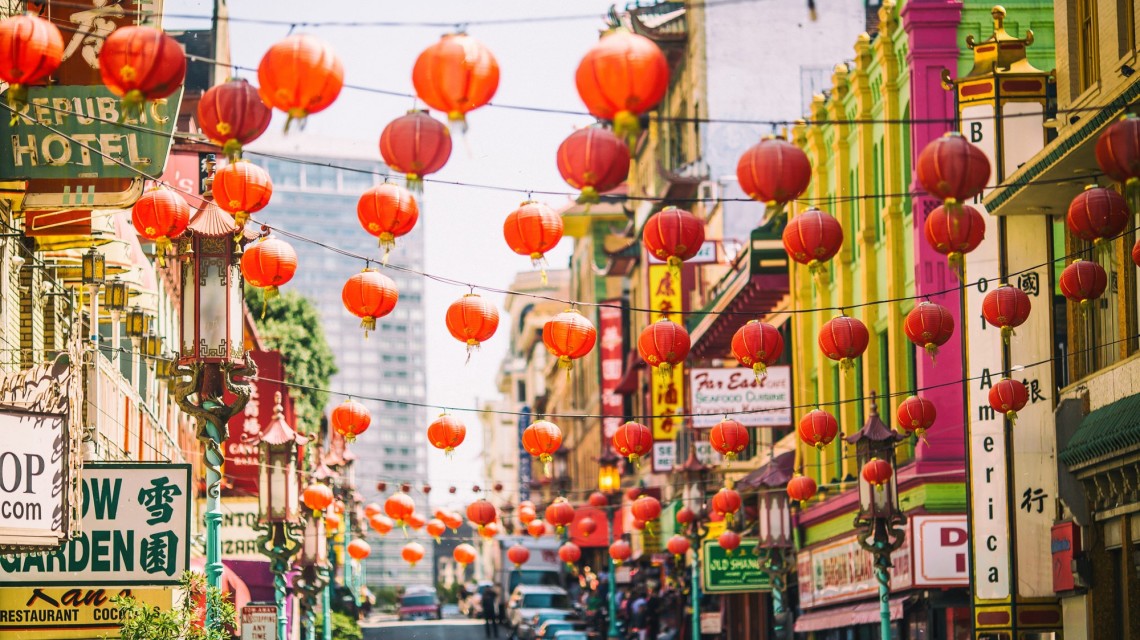By Ellen Lee
Pacific Standard Magazine, March 16, 2017 —
Ethnic studies classes are slowly gaining traction in elementary and secondary education, but Asian Americans still remain largely erased from the history they played a large role in.

(Photo: Thomas Hawk/Flickr)
I still remember my fourth-grade social studies project. Our class was studying the Gold Rush, something all California fourth-graders learned. I was excited because I had asked to research Chinese immigrants during that era. Growing up in the San Francisco Bay Area, I had always known that “San Francisco” translated to “Gold Mountain” in Chinese. The name had stuck ever since Chinese immigrants arrived on the shores of Northern California in the 1850s, eager to try their luck in the gold mines. Now I’d have the chance to learn about them.
My excitement was short-lived. I remember heading to the library with my class and asking for help. I remember the librarian’s hesitation. She finally led me past row after row of books, to a corner of the library where she pulled an oversized book off the shelf. She checked the index and flipped to a page about early Chinese immigrants in California.
That was it. One page. In my entire school library in San Francisco, home of the nation’s first Chinatown, a city indelibly shaped by its immigrants. That was it.
That moment has stayed with me. It was around that time that I began questioning how I, as a 10-year-old Chinese-American girl, fit in. It seemed I didn’t. The history books didn’t include Chinese Americans, or Asian Americans as a whole. Neither did the Nancy Drew mysteries that I enjoyed reading. With the exception of a few token roles, Asian Americans were invisible on television and film.
I finally had the opportunity to learn about Asian Americans like myself, and how we became part of the fabric of the United States, when I took an introductory class on Asian-American history in college.
The class was a revelation. I realized how much had been missing in my textbooks growing up. It almost seemed too late. At age 18, I was on my way into adulthood, my identity shaped by years of never reading, seeing, hearing, or learning about people who looked like me or had a similar background as me. Why, I wondered, weren’t the stories, histories, and contributions of Asian Americans taught in K-12 schools, especially in the elementary schools? Why are they still not taught?
Our students — Asian, Latino, African American, Native American, and, yes, white — stand to gain from a multicultural curriculum, particularly as the U.S. population becomes increasingly diverse. Students of color are more engaged and earn better grades when they see themselves in their studies. Research has also found that white students benefit by being challenged and exposed to new perspectives, gaining a better understanding of racism and developing greater empathy. Even the youngest students can grasp it, says Christene Sleeter, a professor in the College of Professional Studies at California State University–Monterey Bay.
“People will argue that kids are too young to be learning about prejudice and discrimination,” Sleeter says. “But children see social justice issues around them all the time anyway. It’s not that they’re too young to grapple with it. It’s because adults don’t know how to put it in a way that makes sense.”
For decades — dating back to scholars such as W.E.B. Du Bois — activists have called for schools to offer anti-racism or multicultural curriculum. In the late 1960s, universities began to establish ethnic studies programs, examining history, politics, literature, and current events through the lens of people of color.
The 1970s and ’80s saw a push by publishers to produce more inclusive textbooks. In the early ’90s, a group of Chinese-American teachers in San Francisco lobbied state educators to diversify the curriculum, demanding that Asian Americans not be mere “sidebars in textbooks.”
Yet traditional American K-12 curriculum continues to be taught from a Eurocentric point of view. Being multicultural often falls back on weaving children of color into photographs, or creating a few supporting characters that happen to be ethnic — an improvement, but superficial nonetheless.
Elementary school classrooms celebrate cultural holidays — Lunar New Year! Red envelopes! Lion dancers! — but they’re quick to gloss over the challenges and injustices that Asian Americans have faced. Most students don’t, for example, learn about the laws that for years excluded Asians from immigrating to the U.S. They don’t read about the lynchings. They don’t hear the narratives of how and why Southeast Asian refugees had to rebuild their lives here.
These stories matter. They are part of the nation’s history, with lessons to impart. Not learning them can lead to dangerous consequences: Some people in the U.S., for instance, have come to think that the incarceration of Japanese Americans during World War II was necessary, even a model for today’s terrorism threats. They overlook the fact that it was the unjust imprisonment of more than 120,000 innocent Americans because of their ancestry.
Research into what students learn in school has found just how much is missing in their studies. In an analysis, Sleeter reviewed California’s history and social studies framework, the curriculum determined by state educators that influences what is taught in K-12 classrooms. Of the nearly 100 Americans recommended to be studied, 77 percent were white, 18 percent were African American, 4 percent were Native American, and 1 percent were Latino. None were Asian American.
Worse, when Asian Americans do make an appearance in lesson books, it is often laced with problems. “There hasn’t been much progress,” says Nicholas Hartlep, an assistant professor at Metropolitan State University.
His 2016 study of K-12 social studies textbooks and teacher manuals found that Asian Americans were poorly represented at best, and subjected to racist caricatures at worst. The textbooks often relied on tropes such as dragons, chopsticks, and “Oriental” font to depict Asian Americans. The wide diversity of Asian Americans was overlooked; there was very little mention of South Asians or Pacific Islanders, for example. And chances were, in the images, Asian Americans appeared in stereotypical roles, such as engineers.
Asian Americans are the fastest growing population in the U.S. But such misrepresentation subtly enforces (or re-enforces) stereotypes about Asian Americans. And students will carry that with them. “The images are seared into your mind,” Hartlep says.
Teachers with a multicultural background or training could perhaps overcome such curriculum challenges, but they’re few and far between. In California, 65 percent of K-12 teachers are white, compared with a student population that is 75 percent students of color. Nationwide, the gap is even greater. It isn’t a requirement that teachers share the same racial or ethnic background as their students, but the imbalance poses challenges, from the potential for unconscious bias (or frankly, just bias) to a lack of knowledge or comfort in discussing race and culture. (Or, in my case, teachers who couldn’t tell the difference between their Asian-American students).
How race and ethnicity is taught is crucial, says Allyson Tintiangco-Cubales, an Asian-American studies professor at San Francisco State University. She added that it’s not so much about the teacher’s background, but about training. “You can have a great curriculum but if you don’t have teachers dedicated to teaching it well,” she says, “it won’t work as well as you want it to.”
Some teachers are finding ways to expose students to Asian-American issues — if not during school hours, then outside of them. In San Francisco, for instance, the Pinoy Educational Partnerships, founded by Tintiangco-Cubales, teaches elementary, middle, and high school students about the colonialism of the Philippines and the migration of Filipinos to the U.S. through its after-school and in-school classes.
Especially for its younger students, the program, aimed at the city’s large Filipino population, helps them as they form their identity and build relationships with their peers. “We want them to be proud of the skin they’re in,” says Angelica Faustino, who leads the program at Longfellow Elementary School.
“You can have a great curriculum but if you don’t have teachers dedicated to teaching it well, it won’t work as well as you want it to.”
This summer, Wilson Wong will also lead a class of rising fifth-graders at a day camp dedicated to Chinese culture and the Chinese-American community in Oakland, California. His students, for instance, will learn about how Chinese immigrants built the railroads in California, and even have a chance to “experience” it themselves: They will race each other to build a mock railroad with swimming pool noodles on the playground, with some students being forced to “work” longer and faster and at cheaper wages. Wong, a middle school teacher during the school year, hopes he’s exposing the students to how Chinese Americans contributed to the U.S., something that he didn’t get as a student growing up in the San Francisco Bay Area. “I planted the seeds early,” he says. “That’s what I’m hoping for.”
And, despite setbacks, the tide may finally be turning. California legislators passed a bill last year that will bring ethnic studies to all its public high schools. Some school districts, including San Francisco and Los Angeles, already offer ethnic studies at its high schools. High schools in Portland, Chicago, and elsewhere have either implemented or will soon introduce ethnic studies classes. And, as more high schools begin teaching it, the door could crack open for middle schools, and, perhaps inevitably, elementary schools, to incorporate a truly more multicultural curriculum. Doing so will send an important message to the nation’s youngest constituents: No matter your race or ethnicity, you matter. Your history matters. Your story matters.










